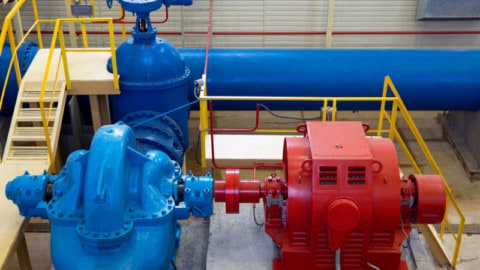The Australian Institute of Refrigeration, Air Conditioning and Heating (AIRAH) and Standards Australia have released a draft version of Residential climate control systems – Minimum applications and requirements for energy efficiency, performance and comfort criteria for public comment.
Standards Australia CEO, Dr Bronwyn Evans, says the standard was prepared by the Joint Standards Australia/Standards New Zealand Committee EE-001, Residential Air Conditioning.
“This standard sets out the requirements for the design, selection, installation, commissioning and maintenance of residential climate control heating, cooling and air conditioning systems,” Dr Evans says.
“Maximising the energy efficiency of these systems was a key consideration by the committee, as well as the safety and comfort of building occupants.”
AIRAH CEO, Tony Gleeson, says regulation aimed at improving the efficiency of residential climate control is overdue.
“There’s been a tremendous amount of work over the past few years on improving the efficiency of HVAC in many building types,” Mr Gleeson said.
“However, the residential sector just hasn’t had the attention that’s been focused on, for example, commercial, university, or public buildings.
“At the same time, our intense summers mean the penetration of residential air conditioning to Australian households is understandably high, and growing. For health and comfort reasons, more Australians than ever have seen the need to cool their homes.
“They’ve done this, however, at a time of ever-increasing utility costs and amid a general awareness that our country must reduce its emissions if it’s to meet our Paris Agreement commitments.
“Given that a substantial percentage of a building’s energy use is dedicated to HVAC, making residential comfort cooling as efficient as possible just makes sense. A residential climate control standard will go a long way towards making this happen.”
AIRAH’s executive manager – government and technical services Phil Wilkinson, said the climate control systems standard has definable intent, and the potential for substantial impact.
“It’s so exciting that this long-term project has reached this stage. A residential climate control standard will help ameliorate Australia’s much-discussed cost-of-energy and peak-demand issues,” Mr Wilkinson said.
“At the same time, setting minimum standards for energy efficiency for climate control systems will offer greater consumer protection. This is particularly the case for those who are vulnerable to the effects of extreme-heat days, such as the elderly.
“Another impact of having clearly defined minimum application requirements for residential climate control is that even greater rigour will be applied to our industry. The fly-by-nighters, cowboys and unscrupulous operators will hopefully be driven out of the industry for good.
“Residential climate-control systems such as air conditioners and heaters should always be installed by those with an Australian Refrigeration Council licence, but unfortunately, that isn’t always the case.”
Mr Gleeson said the release of the draft standard is the culmination of many years’ work, and a product of the regular collaboration and deep understanding between AIRAH and Standards Australia.
“AIRAH first proposed a draft version of the residential air conditioning standard in 2011, and has worked tirelessly since then with Standards Australia to bring the standard to this point. This is a fantastic step forward for energy efficiency and for comfort considerations.
The development of a residential climate-control systems standard has also been listed as a priority project by PRIME, a whole-of-industry pathway to a low-emissions future established over five years of industry consultation and visioning work.










